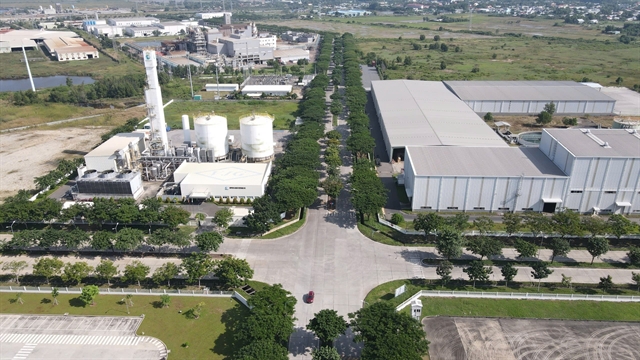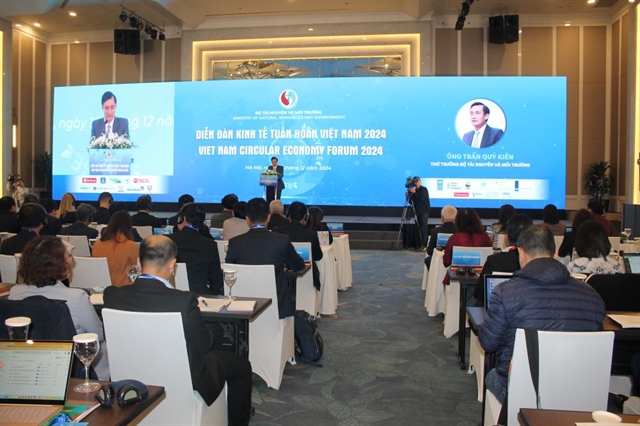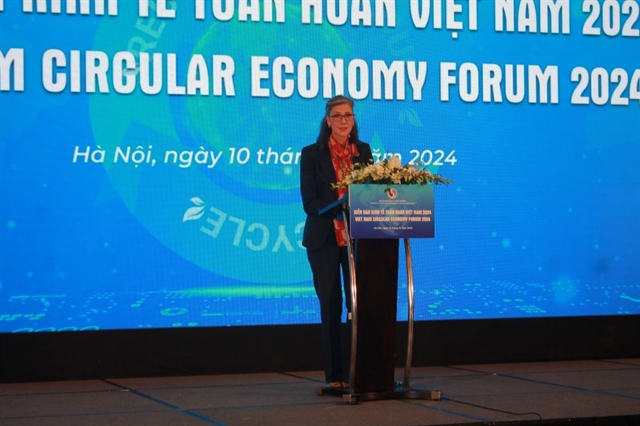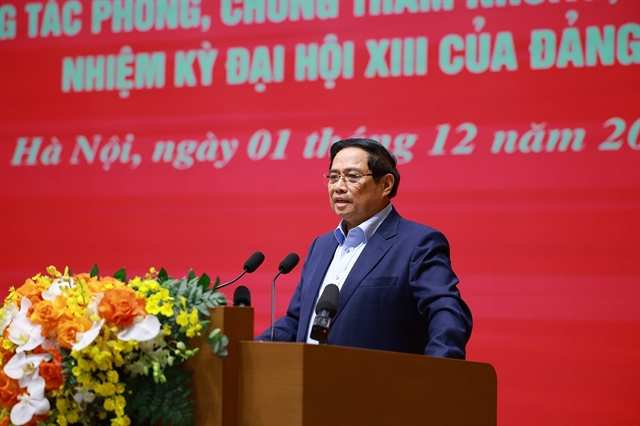 Economy
Economy

 |
| Deputy Minister of Natural Resources and Environment Trần Quý Kiên delivers an opening speech at the forum. — VNS Photo Thu Trang |
HÀ NỘI — Implementing a circular economy is an inter-sectoral task and a responsibility of the whole society with the participation of all levels, including the Government, ministries, localities, organisations and individuals.
This was the view expressed by Deputy Minister of Natural Resources and Environment Trần Quý Kiên at a forum held on Tuesday in Hà Nội.
With the theme 'Promoting the Circular Economy in Việt Nam – From Plan to Action', the Economy Forum 2024 reflected an overall picture of orientations, policy mechanisms, current and innovative solutions to promote the development of a circular economy in Việt Nam, as well as highlighting the role of the private sector.
The annual forum – the third of its kind so far – was chaired by the Ministry of Natural Resources and Environment (MoNRE), in cooperation with the Institute of Strategy and Policy on Natural Resources and Environment, the Việt Nam Economic Magazine and other partners.
Deputy Minister Kiên said that in the past, the MoNRE had worked with ministries and ministerial-level agencies to develop a draft National Action Plan for a circular economy to be submitted to the Prime Minister for issuance.
That plan included efforts and comments of ministries, localities, domestic and foreign experts, as well as support from international organisations.
He affirmed that the State provides resources such as finance, research, application development, technology transfer and equipment production, while organisations and individuals served as the driving force for implementation. In particular, these enterprises should play a pioneering role in innovation and creation of a circular value chain.
He said that implementing the National Action Plan for the circular economy would create momentum for innovation, improve labour productivity, and develop good practices, while promoting green jobs and new value chains.
The Deputy Minister hoped that the Vietnamese business community will actively participate in conducting circular economic initiatives, contributing to Việt Nam's achievement of sustainable development goals by 2030.
Key pathways
 |
| Ramla Khalidi, United Nations Development Programme Resident Representative in Việt Nam, speaks at the forum. — VNS Photo Thu Trang |
The United Nations Development Programme (UNDP) Resident Representative in Việt Nam, Ramla Khalidi, said that the country is five years away from the finish line of the Sustainable Development Goals and halfway towards Việt Nam's Socio-Economic Development Strategy for 2030.
The country has set ambitious goals for this period, including reducing greenhouse gas emissions by nearly 16 per cent, ensuring that 95 per cent of municipal wastewater is treated, and raising gross domestic product (GDP) per capita to 7,500 US dollars.
“These ambitions reflect Việt Nam’s commitment to sustainable development and the well-being of its people,” she said.
Ramla proposed four key pathways to accelerate Việt Nam’s transition to a circular economy.
“First, we must integrate eco-design into policies. Việt Nam today can lead the innovation agenda by embedding eco-design into its circular economy roadmap, setting measurable targets for recycled content, product lifespan and energy efficiency,” she said.
Such measures would not only align the country with global sustainability standards but also promote competitiveness.
“Second, we should prioritise key sectors for integrating circular practices. Việt Nam’s growth is closely tied to international trade. And policies like the European Union’s carbon border adjustment mechanism may impact export-oriented industries such as aquaculture, coffee production and fruit farming,” said Ramla.
Việt Nam should prioritise sectors closely linked to trade such as agriculture, electronics, plastics, textiles and construction materials.
The country's circular transition should be embedded within current institutional reforms in the words of Party General Secretary Tô Lâm.
For instance, simplifying procedures for reusing treated wastewater and addressing the cost disparities between virgin and recycled plastics can unlock opportunities. This requires coordinated efforts across ministries.
“Last, but not least, transition to a circular economy is a whole of society endeavour. Việt Nam must continue to place people and social equity at the centre of the circular transition to ensure it is both just and inclusive. It must also continue to create opportunities for multi-sector and multi-stakeholder dialogues that promote whole of society buy-in and ownership,” she said.
As representative of a typical enterprise at the forum, Lâm Du An, Deputy General Director in charge of Technology and Production at the Sài Gòn Beer - Alcohol - Beverage Corporation (SABECO), said that as it moved towards a circular economy, the company now reuses almost all of its bottles.
SABECO has reduced its use of cans by 15 per cent to support sustainable packaging management. Regarding water, within five years, it reduced water consumption in production by 65 per cent, aiming to reduce this figure to 75 per cent by 2026, while ensuring all wastewater from its factories is treated.
Regarding energy sources, SABECO is committed to reducing electricity consumption by 43 per cent, with a goal of bringing it down by 50-60 per cent by 2026. By 2026, it will use 50 per cent renewable energy sources.
During the forum, domestic and international partners discussed the path to a circular economy in Việt Nam, making it a pioneer country in the ASEAN region in the field. — VNS




